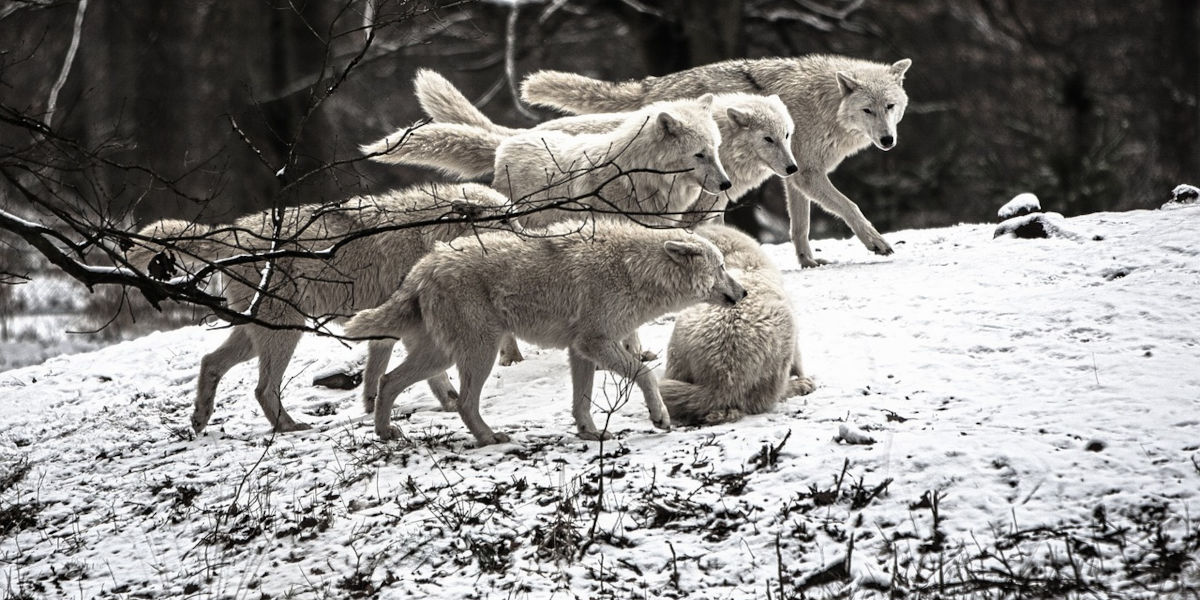In the heart of the wilderness, the haunting melody of a wolf’s howl pierces the quiet. It's a signature sound of the wild - iconic, powerful, and imbued with a sense of mystery and reverence. So much so, in fact, that it begs the inexorable question: 'why do wolves howl?' To begin to answer this, we must first delve into the intricate world of understanding wolf communication.
A Prelude to the Wild: Why Do Wolves Howl?
What is it, then, about a wolf’s howl that sets it apart? Why these majestic creatures choose the form of a howl to express themselves is deeply rooted in their ecology, sociology, and survival strategy. A wolf's howl might be seen as the equivalent of our human languages - a way to convey messages and emotions, to mark territories, and to foster strong interpersonal relationships with other members of the pack.
A lone wolf howls to alert potential rivals to its presence and claims for territory. In a pack, however, the chorus of howls, each unique in pitch, serves to strengthen the social bond within the community. It's clear that the 'how' and 'why' of wolves howling is a complex matter that merits much deeper exploration.
Decoding Nature's Symphony: Understanding Wolf Communication
Wolf communication goes much beyond the quintessential howl. It encompasses an intricate system that includes vocalizations, body language, scent marking, and even facial expressions. This rich tapestry is woven through threads of both evolutionary mandates and individual learning. From low growls to playful tail wagging, every iota of a wolf’s behavior contributes to the narration of its life, offering precious insights into the understanding of wolf interaction.
At the core of any conversation on wolf communication is undoubtedly the iconic howl, a sound that resonates across miles in the wilderness. Talking about this form of communication, Dr. Fred Harrington, a renowned ethologist specializing in canid behavior, once said, "Howling helps pack members communicate, strengthening the social bonds between them, and traditionally it’s also a way of warding off other wolves from their territory.”
The Science of Wolf Behavior: The Language of Canines
To delve deeper into understanding wolf communication, we must peer through the lens of the science of wolf behavior. All elements of a wolf's behavior, whether it be the quintessential howl, a throaty growl, or even a playful nip, are codes in a language we are only now beginning to decipher.
Modern behavioral science has shown that wolves, like many species, not only communicate through clear signals but may also share complex messages, emotions, and instructions. Through scientific observation, ethologists have decoded many aspects of a wolf’s expression of dominance, submission, excitement, and fear. Intriguingly, each individual wolf appears to have a unique 'voice', adding layers to the puzzling enigma of Wolf-language.
Understanding Canine Communication
Wolves, like many other canines, possess a complex communication system that includes a variety of vocalizations, body postures, and visual cues. A range of sounds from barks to growls, yips to whines are crafted meticulously by these wild canids to express a spectrum of emotions, intentions, and messages. But among the myriad sounds they fabricate, none are as spine-chillingly haunting or as intriguing as the famed wolf howl.
Often portrayed in literature and popular culture as the chilling tirade of a nocturnal predator or a haunting melody that echoes across the wilderness, wolf howls have been the subject of fascination for years. As we delve deeper into understanding these mystical creatures, it becomes apparent that the howl of a wolf is more than just a nocturnal activity. It is a sophisticated form of communication, loaded with intricate meanings and purposes.
The precise sound and pace of a wolf's howl are intrinsically tied to its emotions, intentions, and the social dynamics within the pack. Depending on the context, the howl could serve as a call to rally the group, to establish territory, or even to locate a member that has strayed from the pack.
Howls and Hierarchies
A fascinating aspect of wolves' howling behavior is its relationship to the hierarchical pack structure of these creatures. In a wolf pack, every member has a specific rank, beginning with the dominant alpha. One curious fact about wolf howling is that the alpha wolves, both male, and female, usually initiate the chorus of howls. This is a clear demonstration of status and often, the rest of the pack reply in unison, consolidating the bond within the group.
Thi behavior has led researchers to believe that wolf howls are far more than just mindless calls in the wild. Rather, they are carefully orchestrated acoustic feats, used to enhance social cohesion and reflect the power dynamics within the pack.
Improving Human Understanding of Wolf Communication
Understanding wolves' howling can provide valuable insight into their behavioral patterns and social structures. Modern technology such as digital audio recording and sound analysis software are massively aiding in deciphering the cryptic wolf language. Using these tools, scientists can breakdown each howl into its basic components, analyzing its frequency, pitch, and duration to determine its possible meanings. This research provides a golden opportunity to humanely delve deeper into wolf society and unravel the mysteries encapsulated in their eerie nocturnal symphony.
Decoding the language of wolves not only fulfills our curiosity but also contributes greatly to their conservation efforts. By understanding their communication and behavioral patterns, we can enhance our strategies to protect and co-exist with these iconic creatures of the wild. After all, every howl that graces our night skies is a poignant reminder of the wild's never-ending call and an echo from a world that we are yet to fully comprehend.
In conclusion, the howl of a wolf paints a collective picture of the wolf society, conveying their emotions, intentions, and hierarchy to the world. It is a never-ending conversation that echoes throughout the wilderness, it’s each note spelling a different story, a different message, and another secret of the wild.




